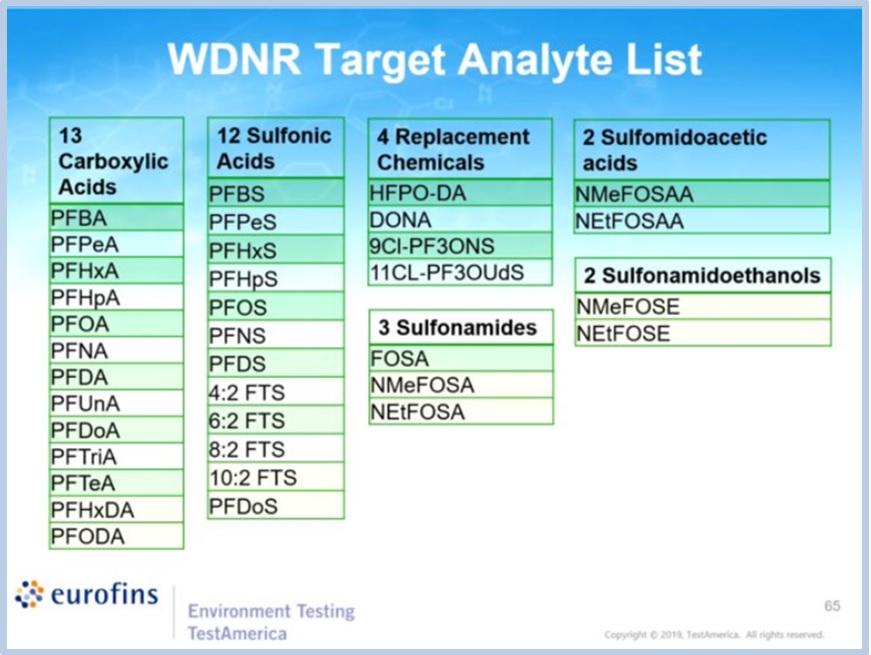 In order to assure that Wisconsin residents, military base workers and service members are fully and promptly informed of potential risks to public health, groundwater standards recommended by state health officials should be immediately adopted by the state legislature. These interim standards should have the force of law until such time as permanent standards are promulgated.
In order to assure that Wisconsin residents, military base workers and service members are fully and promptly informed of potential risks to public health, groundwater standards recommended by state health officials should be immediately adopted by the state legislature. These interim standards should have the force of law until such time as permanent standards are promulgated.
Here’s why…
We are neighbors of the former Badger Army Ammunition Plant in rural Sauk County — the source of four separate groundwater contaminant plumes of solvents and explosives. Three plumes have migrated offsite, contaminating nearby drinking water wells and discharging to the Lower Wisconsin Riverway.
 In 2018, the military at Badger hosted a public informational meeting to report on their preliminary PFAS investigation. Army officials explained that PFOA and PFOS had been detected in groundwater at concentrations that did not pose a risk to public health. No one said anything about other forms of PFAS. Just the two – that was it.
In 2018, the military at Badger hosted a public informational meeting to report on their preliminary PFAS investigation. Army officials explained that PFOA and PFOS had been detected in groundwater at concentrations that did not pose a risk to public health. No one said anything about other forms of PFAS. Just the two – that was it.
Months later, in response to our Open Records request, we found the complete data set which showed that the summed total concentration of all PFAS chemicals tested was actually much higher – in fact, 4 times higher.
So what happened? The Army only shared test results for PFOA and PFOS, and intentionally omitted all other PFAS detections because, they argued, that full disclosure was NOT required as the additional PFAS analytes are “not regulated by the State”.
We have experienced first-hand that without clear and comprehensive state regulation of ALL forms of PFAS, communities like our own are not fully informed and are therefore at increased risk for exposure and harm.
And our community is not alone. In other host communities in Wisconsin, concentrations of PFOA & PFOS combined have been detected in groundwater at Fort McCoy (near Sparta) at concentrations as high as 121,000 ng/L, at General Mitchell’s 440th in Milwaukee 10,800 ng/L, at Volk Field Air National Guard in Camp Douglas 23,000 ng/L and at the Wisconsin Air National Guard Truax Field in Madison 39,841 ng/L.
By comparison, state health officials have recommended a groundwater standard of only 20 ng/L for the summed total concentration of PFOA, PFOS, and four additional PFAS compounds (FOSA, NEtFOSA, NEtFOSAA, and NEtFOSE).
Access to federal funding for investigating and cleaning up Wisconsin’s military sites is tied to the federal CERCLA (Superfund) process which identifies how state standards are evaluated. In particular, the military emphasizes that it is promulgated state environmental standards that may qualify as an “Applicable or Relevant and Appropriate Requirement” (ARAR) for remedial action.
PFAS are a group of toxic man-made chemicals that are very persistent and mobile in the environment, creating huge groundwater contaminant plumes that readily migrate miles from source areas. PFAS contamination from the 3M facility in Woodbury, Minnesota, has reached four underlying drinking water aquifers, contaminating groundwater in an area exceeding 100 square miles.
Approximately two-thirds of the people living in Wisconsin rely on groundwater for their drinking water. Adequate supplies of uncontaminated groundwater are crucial to the health of all residents and their families, particularly expectant mothers and newborns. The major types of human exposure sources for PFAS include contaminated drinking water and food contaminated with PFAS, including fish and shellfish. Other human exposure pathways include incidental soil/dust ingestion, dermal exposure and inhalation.
 Human health studies have shown that exposure to certain PFAS may affect growth, learning, and behavior of infants and older children, lower a woman’s chance of getting pregnant, interfere with the body’s natural hormones, increase cholesterol levels, affect the immune system, and increase the risk of cancer.
Human health studies have shown that exposure to certain PFAS may affect growth, learning, and behavior of infants and older children, lower a woman’s chance of getting pregnant, interfere with the body’s natural hormones, increase cholesterol levels, affect the immune system, and increase the risk of cancer.
There is growing evidence that babies, even before they are born, are particularly vulnerable to harm. PFAS in a mother’s body can move from her blood into her unborn child and from her breast milk into her breastfed baby. Therefore, this population in particular should be a priority consideration in the State’s efforts.
There are currently no enforceable state groundwater standards for PFAS applicable to the complex mixture of PFAS found in Wisconsin’s groundwater.
The reality is that human exposures are invariably a mixture of PFAS compounds and the State must address total exposure to all PFAS as opposed to the focus on a very few in isolation. Approaching PFAS as a class for assessing exposure and health effects is the best way to protect public health.
PFAS chemicals never occur alone. They are present in complex mixtures within products, the environment, and people. The PFAS family is incredibly large – numbering in the thousands, with more than 600 in active commercial use. Assessing risks of chemicals having a similar mechanism of toxicity is not unusual and is similar to how other chemical groups such as dioxins, PAHs and PCBs have been assessed and regulated. But without this data and without state regulations, drinking water supplies may be dosed with PFAS – undetected for years and even decades.
Solving the PFAS crisis will not be easy and it will be expensive, but this does not cancel our shared responsibility to inform and protect the public.
So far, 28 PFAS chemicals have been detected in or pose a threat to the Wisconsin’s groundwater, and as analytical methods for PFAS continue to evolve and improve, this number will quickly escalate.

Hiding the complete PFAS problem doesn’t make it go away – it only means that exposures remain undetected.
Header photograph: Public fishing at U.S. Army Garrison Fort McCoy near Sparta, WI where PFOA & PFOS combined have been detected in groundwater at concentrations as high as 121,000 ng/L.
Printer-friendly version:
Wisconsin Groundwater Standards Critical for Military Base Cleanup CSWAB June 2023

